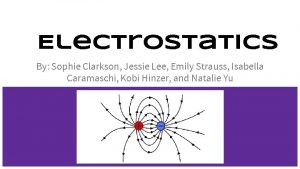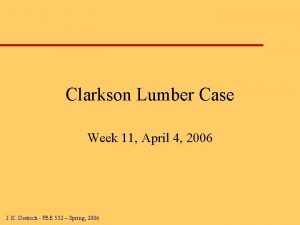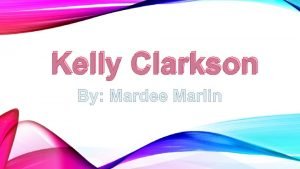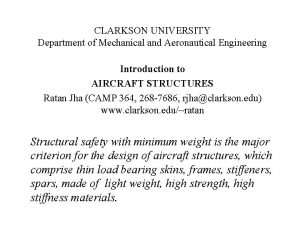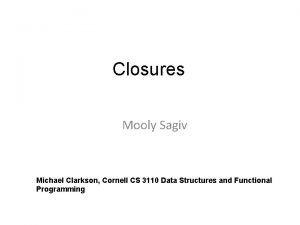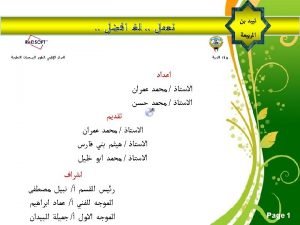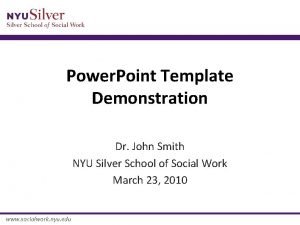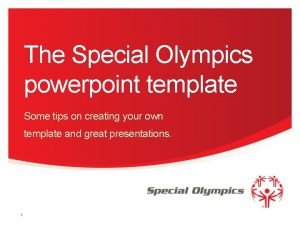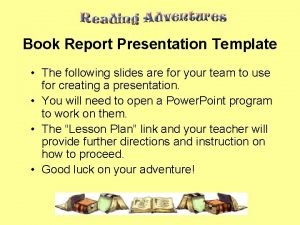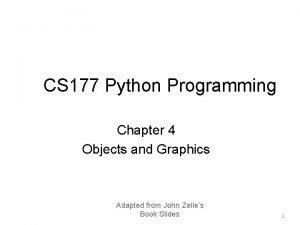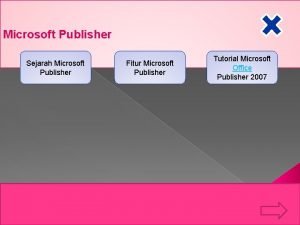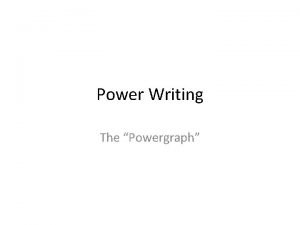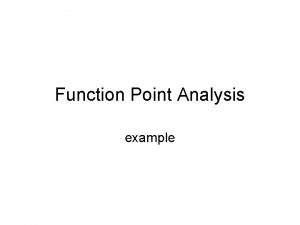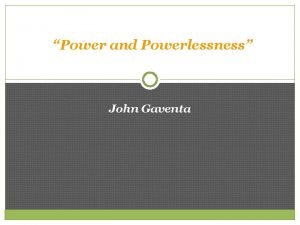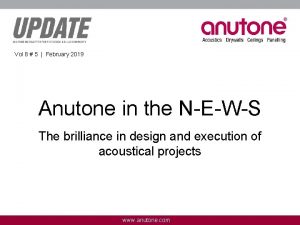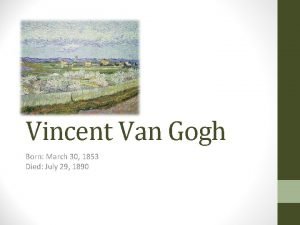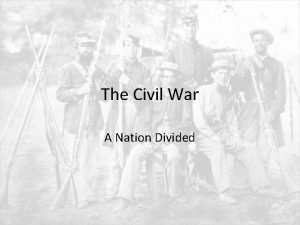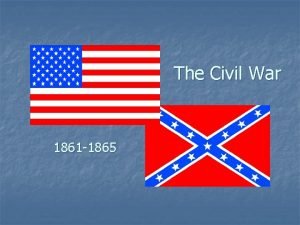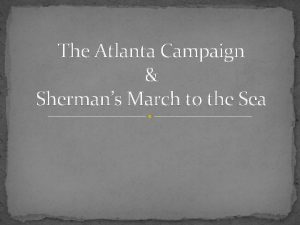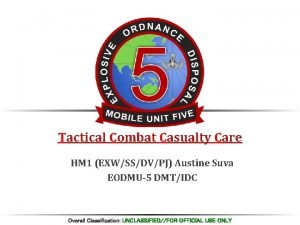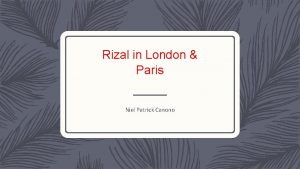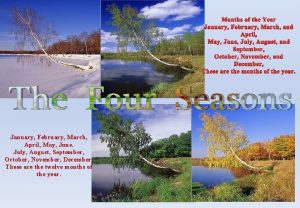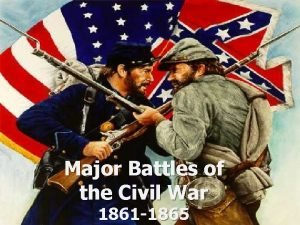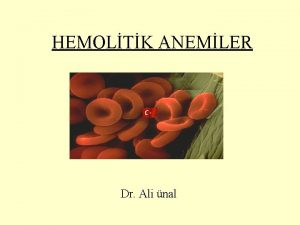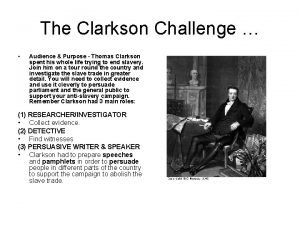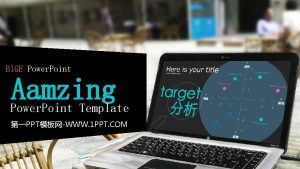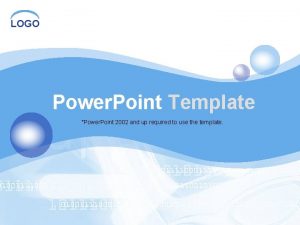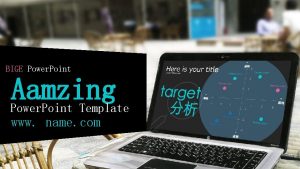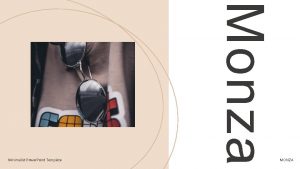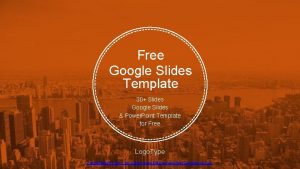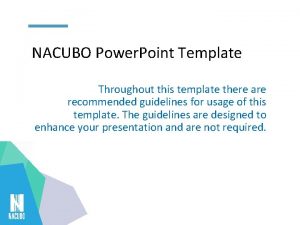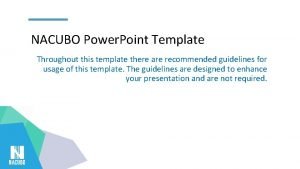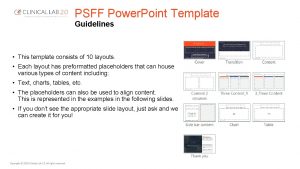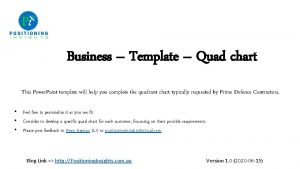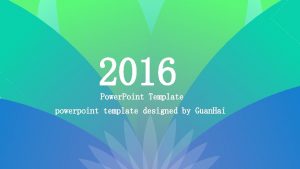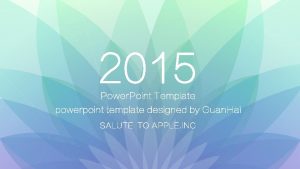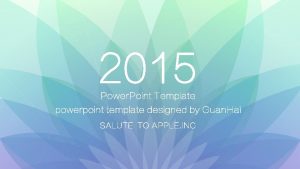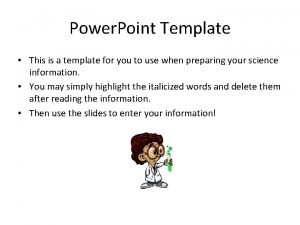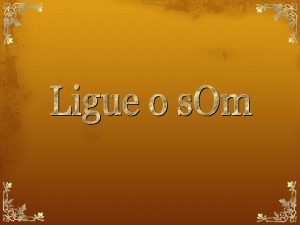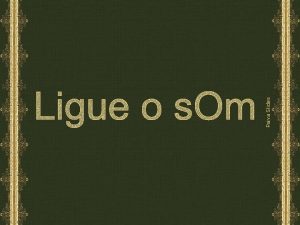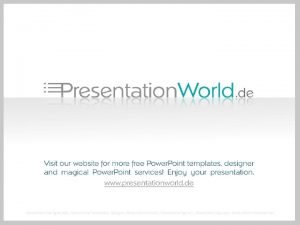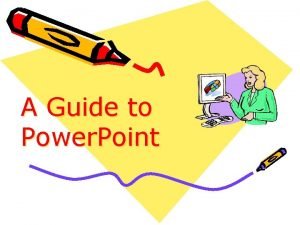Power Point slides template March 2014 John Clarkson













































- Slides: 45

Power. Point slides template (March 2014) John Clarkson Sam Waller

Instructions • This document is the standard template to be used for all EDC Power. Point presentations • Using a common style for all presentations: – Supports a common identity for all the EDC’s work – Makes it easier to share slides and incorporate them into different presentations • New slides can be created by duplicating existing slides, or inserting new slides and then choosing the appropriate layout. A blank white slide and a blank black slide are now available from the layout menu (right click on the slide thumbnail in the left-hand side). • The default text box should now be fixed so that when you draw a new text box it is Arial 22 pt. You can also how easily make text boxes with rounded corners, simply draw a ‘rounded rectangle’ and then start typing. John Clarkson and Sam Waller, 19 March 2014 2

Updating old slides • The slide number and words ‘Engineering Design Centre’ exist as ‘header and footer’ elements on the previous template. In order to update an old presentation to the new template, you need to – Copy the slides into this presentation. – For Power. Point 2010, click Insert > Header & Footer. Then make sure that the tick box for 'footer' is blank, then click 'apply to all'. This will remove these elements from all slides. You may optionally choose to use this dialogue box to also remove all the page numbers – Run through all the slides and check they have updated appropriately, and delete any remaining footer elements, and sort out any graphics that clash with page numbers. • If you want to update an old presentation manually, you will need to go into the slide master, select slide 1 and then delete the horizontal line at the bottom. You will also need to follow the instructions above to sort out the footer elements, and manually create the new title slide and section break slide. 3

Single line title of presentation Author name 1 Author name 2

Collaborators If you need to include collaborator logos, do so on the second slide. Collaborator logos do not work well on the title slide because it confuses what the engineering design centre is and where you are from. When indicating a collaboration, omit the red EDC logo as this only adds confusion. 5

Contents page • Title of section 1 • Title of section 2 • Title of section 3 6

Text only slide Important statement 1 • Text 2 – Sub-bullet (only one level allowed) Important statement 2 • Text 3 • Text 4 Sources, references etc. go here if needed, and might use smaller text 7

Text and picture slide • Text here is Arial 22 pt • Text box is 10 cm wide Standard picture size is 9. 56 cm high x 12. 86 cm wide Used the dotted line drawing guides provided on the slide to align pictures to the top right hand corner, regardless of their size Sources, references etc. go here if needed, and might use smaller text 8

Picture only slide A single large picture should be centred on the slide and aligned to the top guide, regardless of its size Sources, references etc. go here if needed, and might use smaller text 9

Annual spend on domestic energy in 2009 Graph should be produced in Excel as a 15 cm by within a worksheet. Font sizes should be modified and line weights modified to 2. 25 pt. Vertical axis s 3 - 5 intervals only. There should be no box aroun Paste graph into the slide as a picture and then align the top line of graph with the top dotted line. should not have a graph title, the slide title should this function. Source: DECC (2011) Energy Consumption in the UK 10

Picture slide with single line of text • Single line of text This picture should be centred on the slide and have plenty of space between any text above or below it. Sources, references etc. go here if needed, and might use smaller text 11

Fullscreen photos should have a black background. If you need to lay text over the photo, use white 36 pt text in front of a part of the photo with a consistent colour 12

Some photos work well when they are cropped to fill the entire slide! 13

Title of Section 2

Contents (recap) • The previous • This section • The next section For multi-session workshops, use this content slide to help structure the day. For presentation shorter than an hour, use the previous ‘breaker slide’ to indicate the sections and omit this recap. 15

An example presentation 16

Cambridge Engineering Design Centre John Clarkson

Cambridge Engineering Design Centre • Improving the design process 18

Research history • Centre established in 1991 by Professors Ken Wallace, David Newland Michael Ashby 19

Research mission • To undertake innovative research to create understanding, methods and tools that will contribute to improving the design process 20

Research team • Professor John Clarkson (systems) • Professor Ken Wallace (mechanical) • Professor Michael Ashby (materials) • Mr Aylmer Johnson (mechanisms) • Dr Geoff Parks (nuclear) • Dr James Moultrie (manufacturing) • Dr Digby Symons (healthcare) • Dr Jerome Jarrett (aerospace) • Dr Nathan Crilly (product) 21

Research team • Total turnover around £ 3. 0 million per year • Providing for a team of over 60 researchers – academic staff (7) – researchers associates (22) – research students (33) – computer programmers (4) – support staff (3) 22

Research clusters

Research clusters • Process • Product • People Knowledge management Change management Process (EPSRC) Process management Healthcare design People (EPSRC) Product (EPSRC) Computational design Inclusive design Design practice Design management 24

Knowledge management • Capture, storage and retrieval of engineering knowledge 25

Knowledge management 26

Process management • Modelling the design process 27

Process management 28

Change management • Modelling change in products 29

Change management 30

Computational design • Integrated optimisation methods and tools 31

Computational design 32

Healthcare design • Design for patient safety 33

Healthcare design 34

Inclusive design • Countering design exclusion 35

Inclusive design 36

Design practice • Understanding and comparing practice 37

Design practice 38

Design mangement • The strategic role of design 39

Design management 40

Collaborators

Research collaborators / competitors • Bath EDC – Information management • Brunel – Healthcare IT • Loughborough – Process modelling • Royal College of Art – Inclusive Design • Salford – Product Introduction Process • Sheffield – Healthcare design • Strathclyde – Decision support 42

Research collaborators / competitors • Copenhagen – Process modelling • Delft – Product modelling • MIT, Boston – Design Structure Matrices • TUM, Munich – Process/product modelling • Stanford – Collaborative design • KTH, Stockholm – Product Introduction Processes • Texas – Uncertainty modelling 43

Research collaborators / competitors • Rolls-Royce, BAE SYSTEMS, Airbus, • Perkins Engines, Volvo, BP • Department of Health, National Patient Safety Agency, Purchasing and Supplies Agency, Gambro • BT, Sagentia, Royal Mail 44

Cambridge Engineering Design Centre John Clarkson
 March march dabrowski
March march dabrowski A small child slides down the four frictionless slides
A small child slides down the four frictionless slides Final energy quick check
Final energy quick check Sophie clarkson
Sophie clarkson Is kelly clarkson a neuroscientist
Is kelly clarkson a neuroscientist Clarkson lumber company case solution
Clarkson lumber company case solution Behind these hazel eyes guitar chords
Behind these hazel eyes guitar chords Clarkson mechanical engineering
Clarkson mechanical engineering Joshua fiske
Joshua fiske Cornell cs 3110
Cornell cs 3110 Template islamic powerpoint free
Template islamic powerpoint free Powerpoint template
Powerpoint template Power point template
Power point template Power triangle diagram
Power triangle diagram Power bi training powerpoint
Power bi training powerpoint Point point power
Point point power Nyu slides template
Nyu slides template Olympics template powerpoint
Olympics template powerpoint Book report presentation
Book report presentation John zelle python slides
John zelle python slides John mayer slides
John mayer slides John mayer slides
John mayer slides Template template yang terdapat pada microsoft publisher
Template template yang terdapat pada microsoft publisher Power writing paragraph
Power writing paragraph Power threat meaning framework
Power threat meaning framework Power bi governance plan
Power bi governance plan Power bi usage metrics solution template
Power bi usage metrics solution template Function point analysis example
Function point analysis example John gaventa power cube
John gaventa power cube John gaventa power and powerlessness
John gaventa power and powerlessness Grihalakshmi magazine march 2019
Grihalakshmi magazine march 2019 Vincent van gogh nationality
Vincent van gogh nationality Genetic engineering conclusion
Genetic engineering conclusion March 1917 revolution
March 1917 revolution Sherman's march to sea map
Sherman's march to sea map Sherman's march significance
Sherman's march significance Path of sherman's march to the sea
Path of sherman's march to the sea Path of sherman's march to the sea
Path of sherman's march to the sea 9 line
9 line Aleida march de la torre
Aleida march de la torre January february march april
January february march april London 1890 rizal
London 1890 rizal January february march
January february march Sherman's march to the sea
Sherman's march to the sea March 30 1981
March 30 1981 Metiltopa
Metiltopa



